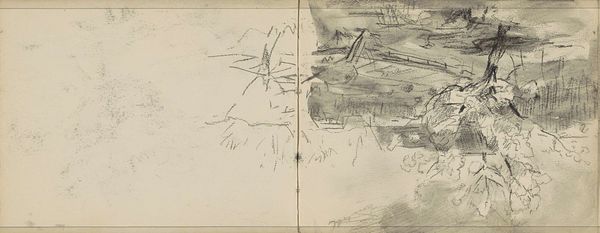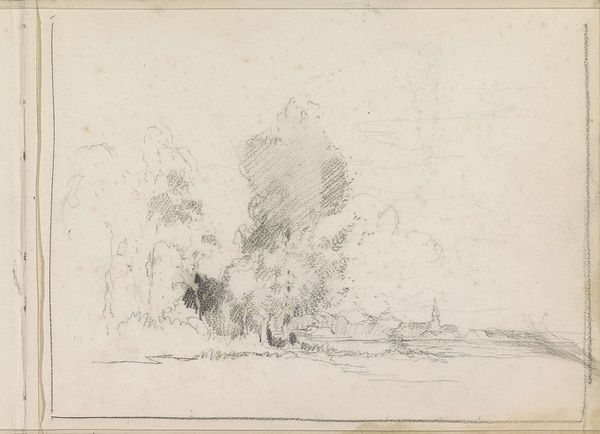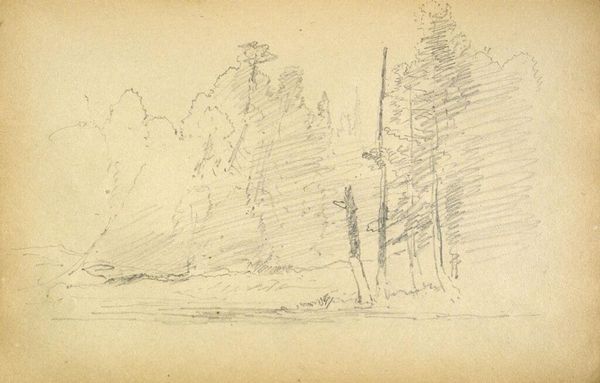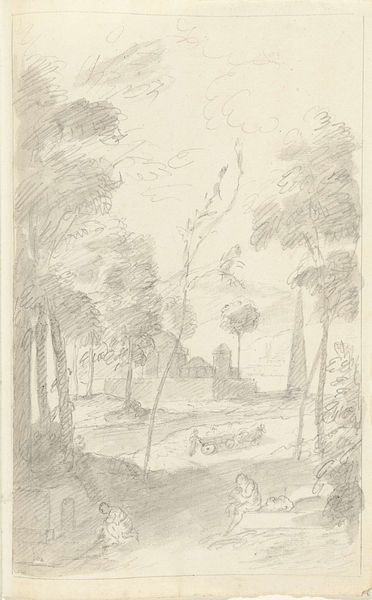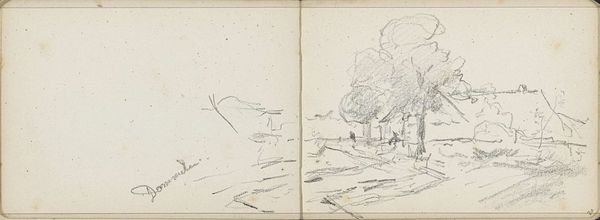
Copyright: Rijks Museum: Open Domain
Curator: Welcome. We are looking at a double-sided pencil drawing by Johan Antonie de Jonge, titled “Figuurstudie en een rivierlandschap met molen,” created in 1909. Editor: Immediately, I’m drawn to the contrasting styles—the sketch on the left feels very immediate, focused on the figure, while the landscape on the right is more developed, denser in its depiction. I'm interested in what materials the artist was thinking of in that contrast. Curator: De Jonge was working in a period heavily influenced by Impressionism, a time of artistic freedom and experimentation. Artists often looked to capture fleeting moments. The rapid figure study speaks to that impulse. Editor: True. But there is also the materiality to consider. The quick, almost frantic lines of the figure suggest the artist trying to catch movement, or perhaps the effects of labor. I’m wondering, what kind of paper did he use and how available it would have been? Curator: These drawings served as studies, so accessibility likely factored in. It seems that he has recorded an intimate scene on one side, with the figure dominating the frame, but on the other, he observes industry in his landscape; how does his environment, even broadly speaking, effect what kind of art is he capable of making? Editor: The contrast in approach highlights a key issue: labor and landscape intertwined. The windmill symbolizes production; someone is working in this place, transforming the land, harnessing natural resources. Curator: Certainly. And, this raises questions about art production too: What role does de Jonge's artistic labour play in depicting these landscapes? How are these sketches circulated and viewed? He isn't depicting this activity as romantic or idyllic, this river serves some kind of practical function. Editor: Right. Think about the societal value given to sketches, studies—how often do we consider the role of materials in conveying an artistic vision? The artist is carefully selecting from materials readily available at that time, while his subject takes what it needs from natural resources available at that time too. Curator: Exactly. Thinking about De Jonge's body of work in his specific context shows him to be an astute observer and artistic explorer. Thank you for your thoughts. Editor: And thank you; thinking about it now, those choices emphasize the physicality and economic realities of his time, as well as ours.
Comments
No comments
Be the first to comment and join the conversation on the ultimate creative platform.
